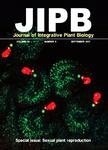Recombinase-mediated Gene Stacking as a Transformation Operating System
Recombinase-mediated Gene Stacking as a Transformation Operating System作者机构:South China Botanical Garden
出 版 物:《Journal of Integrative Plant Biology》 (植物学报(英文版))
年 卷 期:2011年第53卷第7期
页 面:512-519页
核心收录:
学科分类:0710[理学-生物学] 07[理学] 09[农学] 071007[理学-遗传学] 0901[农学-作物学] 090102[农学-作物遗传育种]
主 题:site-specific recombination transgenic plants DNA integration marker removal Cre-lox
摘 要:The current method for combining transgenes into a genome is through the assortment of independent loci, a classical operating system compatible with transgenic traits created by different developers, at different times and/or through different transformation techniques. However, as the number of transgenic loci increases over time, increasingly larger populations are needed to find the rare individual with the desired assortment of transgenic loci along with the non-transgenic elite traits. Introducing a transgene directly into a field cultivar would bypass the need to introgress the engineered trait. However, this necessitates separate transformations into numerous field cultivars, along with the characterization and regulatory approval of each independent transformation event. Reducing the number of segregating transgenic loci could be achieved if multiple traits are introduced at the same time, a preferred option if each of the many traits is new or requires re-engineering. If reengineering of previously introduced traits is not needed, then appending a new trait to an existing locus would be a rational strategy. The insertion of new DNA at a known locus can be accomplished by site- specific integration, through a host-dependent homology-based process, or a heterologous site-specific recombination system. Here, we discuss gene stacking through the use of site-specific recombinases.



